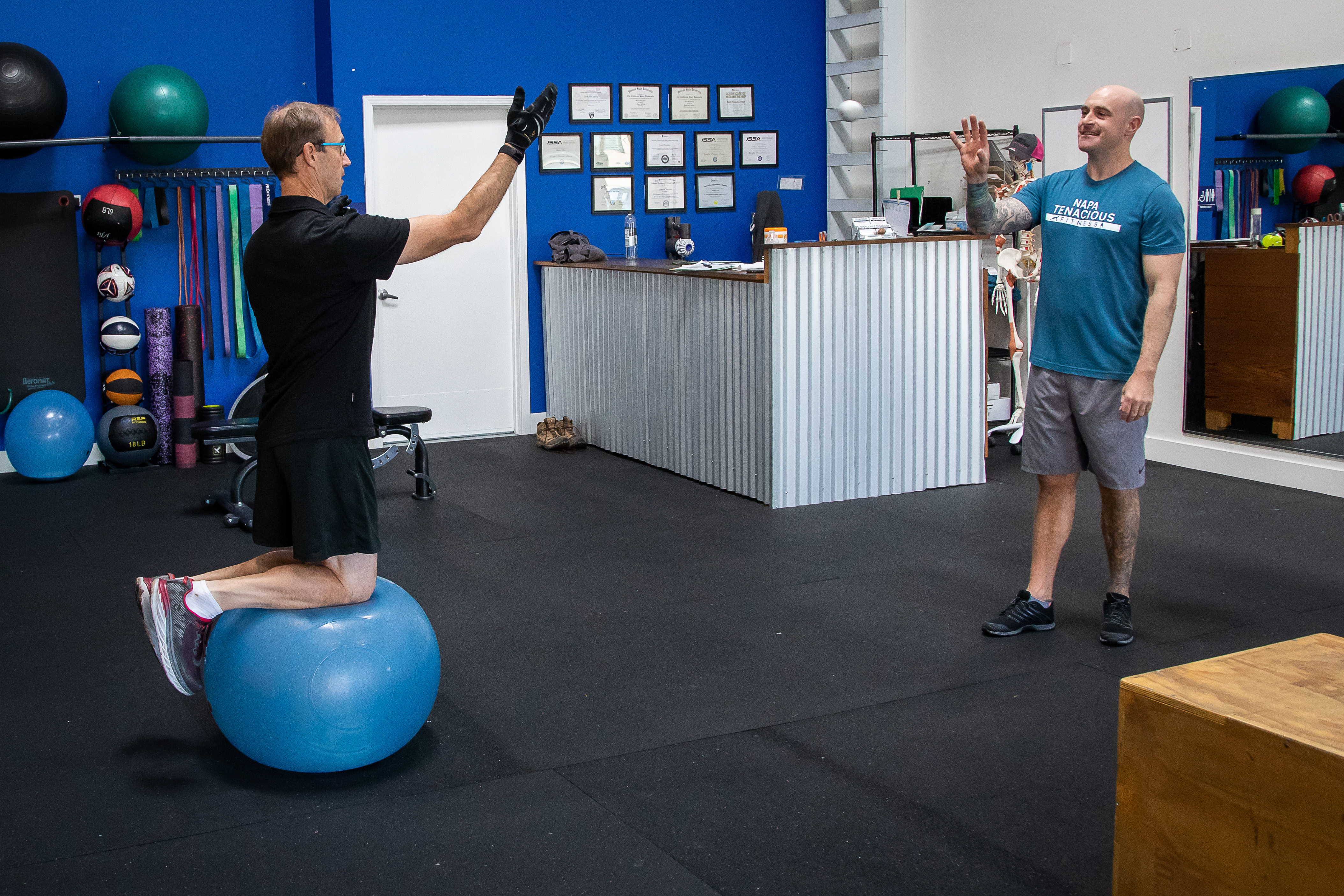“I read some research that one of the biggest factors causing falls is related to having a weak core,” expressed Dutch during one of his weekly personal training sessions. Dutch expressed this as we performed an exercise involving balancing on one leg as I threw a la crosse ball, bouncing it off of the ground for him to catch for five repetitions each hand. “I feel like I’m using my core throughout this movement,” added Dutch. “Most people would think this is a circus sideshow act, but I need to engage my stomach, back, and glutes to get this done.” Dutch was spot on with his discovery that balance requires substantial activation of the core muscles. Furthermore, conditioned and optimally functioning core muscles play an important role in reducing the likelihood of falling.
A common perception of core muscles is the abdominal muscles seen on fitness models present on social media feeds and famous movie stars with abdominal lean muscle mass definition akin to the acute, precisely angled edges of a washboard. There is truth that the abdominal muscles are involved in our core. However, the muscles involved in the center of our body dividing the upper and lower extremities are more complex than just our abdominals.
If we can envision the body from an anterior view, from top to bottom we have the cranium, upper extremities and rib cage, abdomen, hips, and finally the legs at the lowest portion. Residing directly in the middle of the body is the area including the belly button and hips. In the exercise physiology realm, we define any muscle or connecting structure in that area as the core. This means that the chiseled Greek-god-like abs Brad Pitt puts on display during his boxing fight scene in the movie Snatch are not the only muscles involved in the core. The muscles along the spine, lateral aspects of the abdomen, and infrastructure of the hips play an equally important role in the development of a proficient core and in reducing the risk of falling.
Presentations influencing risks of falling include loss of balance, a foot colliding into an unnoticed raised object when walking, stepping off a declined surface caused by a lack of detection of the height of the ground, or lacking the ability to regain balance from a multitude of other situations imposing loss of balance. Decreased conditioning of core muscles and the lumbopelvic hip complex contributes to issues of losing balance or tripping and falling.
For example, a body with a hunched-over kyphotic posture can be produced by a lack of paraspinal and glute strength. Back extension and gluteal strength keep the hips underneath the ribs. One could imagine that if our butts stick out too far from our bodies, our chest is going to move forward causing a curved and arched shape of our thoracic and cervical spine akin to the structure of a fishing pole with a fish caught on the line. What happens when the fisherman lets go of the pole when a powerful fish is pulling the forward? The pole goes forward into the ocean. The same action occurs when the gluteal and paraspinal muscles lack strength and engagement when the body is tilting forward: We’ll lean forward too much and potentially fall face-first.
The risk of falling is more apparent in sedentary, injured, advanced-age, and deconditioned populations. Desk or commuting jobs requiring demanding hours of sitting in cars and airplanes influence sedentary situations where exercise is challenging to come by. After eight to ten hours of sitting and working all day, the last thing someone wants to do is exercise. Additionally, orthopedic injuries inflicting pain on the back, hip, or knee joints can hinder motivation when it comes to routine exercise. If any type of movement causes pain, why would someone want to exercise and inflict more pain on themselves? Furthermore, a lack of balance can occur with the advancement of age. Decreased spacial awareness and coordination contribute to increased rates of falling when nagging injuries add up and natural age-related symptoms that include an increased amount of time to regain balance as we age.
To counteract the effects of deconditioned fitness levels and general advancement of age contributing toward tripping and falling, feature core exercises involving the entire core throughout a ritualized fitness routine. This means dedicating time to exercising the muscles of the lower back, abdominals, and hips one to three times per week. If you’re not sure where to start, schedule a session with a local physical therapist or trusted personal trainer. Part of understanding what exercises best support factors that mitigate risks of falling is education on what causes falls and what tactics help us avoid falls. After studying topics that cause falling, we gain tools to understand that adhering to a uniquely designed exercise program has the power to help us live happier, healthier, and stronger lives.
Sean McCawley, the founder and owner of Napa Tenacious Fitness in Napa, CA, welcomes questions and comments. Reach him at 707-287-2727, napatenacious@gmail.com, or visit the website napatenaciousfitness.com.

